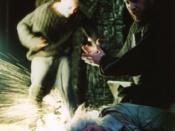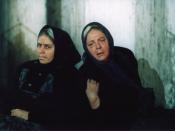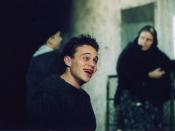Martin McDonagh on the Hungarian Stage
- The Cripple of Inishmaan -
�
Abstract
Martin McDonagh's success story in Hungary is studied in this thesis, with a special focus on The Cripple of Inishmaan and its long-lived performance in Budapest's Radnóti Theatre. Through the analysis of the plot and the characters, we examine whether the play is indeed steeped in Irish culture. Certain characteristics of McDonagh's stage machinery are identified to arrive at the conclusion that it is in fact rather this than his Irishness that provides his plays with a unique tone and which leads performances to success.
�
Table of Contents
1Introduction �
31 | The Cripple of Inishmaan �
41.1 | The Plot and The Man of Aran �
81.2 | Characters �
231.3 | The Irish Dimension �
251.4 | Language �
292 | The Staging in Radnóti Theatre �
312.1 | The Translation �
342.2 | Dramaturgical Changes in the Play �
382.3 | Music, Scenery, and the Irish Dimension �
412.4 | Characters and Actors �
512.5 | Critical Reception �
533 | Conclusions �
55Bibliography �
58Appendix 1 | Pictures of the Radnóti Production �
61Appendix 2 | Stage Productions of McDonagh's Plays in Hungary �
�
�
Introduction
Martin McDonagh, the contemporary English-Irish playwright has enjoyed enormous success on the Hungarian stage.
Audiences have seen seventeen premieres of five of his six plays published to date. The Beauty Queen of Leenane, the first play to be staged in Hungary arrived in the country in 1997, only one year after its opening in Town Hall Theatre, Galway. Theatres with casts including the most renowned directors and translators have produced his plays all around the country, and even today, thirteen...


